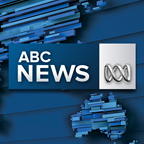
Updated
 Photo:
The poster was designed by English-born artist William Blamire Young. (Supplied: National Archives of Australia)
Photo:
The poster was designed by English-born artist William Blamire Young. (Supplied: National Archives of Australia)
Tea, anyone? Long before Australians developed their passion for coffee, the brew of choice was campfire billy tea, afternoon tea in the home, or an elegant tea for two at a fashionable city tea house.
Tea was big business, and companies such as Bushells and the Melbourne-based Robur Tea Company advertised extensively in newspapers, on the sides of buildings and on railway billboards.
In the mid-to-late 19th century, Australians were the biggest tea consumers in the world, drinking between four and five kilograms per capita each year.
 Photo:
Railway stations were popular sites for advertising tea. (Supplied: National Library of Australia)
Photo:
Railway stations were popular sites for advertising tea. (Supplied: National Library of Australia)
The National Archives of Australia (NAA) has meticulously restored a Robur Tea billboard poster from 1899 which was discovered when a researcher noticed it listed on a database.
It was divided into six sheets, each measuring approximately 100cm x 76cm, that were folded up, brittle and damaged in an envelope.
Conservator Caroline Milne said the plan was to digitise it, but the people who retrieved it were shocked by its poor condition.
"They just sort of peeked into the folder and went 'Oh that looks delicate'," Ms Milne said.
"So they brought it into us and the conservators here gingerly opened it out to have a look at it."
The process to restore the rare poster was difficult; the paper was marked with deep fold lines, pieces had fallen off, and conservators were worried it might disintegrate.
'A cup of tea but no piece of cake'
As the sink in its laboratory was too small, the NAA team had to build a makeshift bath to wash and de-acidify the poster sheets, before each was lined with Japanese tissue paper.
"It was quite tricky," Ms Milne said.
"[The paper] has a very thick layer of ink, and not all the inked areas behaved the same in the water.
"Some areas of the paper absorbed water very easily, others repelled it, which then made it behave strangely when you go to line it."
When the restoration was finished, and the poster finally digitised, the team presented a paper detailing their work at a conference in Hobart.
"We actually called it 'A cup of tea but no piece of cake'," Ms Milne said.
Maths teacher turned poster artist
The poster was designed by English-born William Blamire Young (1862-1935), an artist and critic who designed the kangaroo and map image on the first Commonwealth of Australia stamps.
After several years in Australia as a mathematics teacher, Young returned to England in 1893 to further his interest in art and became involved with the Beggarstaffs, the pseudonym of innovative poster designers James Pryde and William Nicholson.
"His poster style very much echoes that style of work ... he really went back to England when the English poster movement was at its height," Ms Milne said.
Later that decade in Melbourne, Young worked on posters with Norman and Lionel Lindsay and Harry Weston.
He presented the advertising manager of the Robur Tea Company with two poster designs and 1,000 of each were ordered for a cost of 200 pounds.
A copy of the second design — also expected to have been lodged in the archives under copyright laws — has yet to be discovered.
Ms Milne hoped the restored poster would one day be publicly displayed.
"It's really timeless — it looks very modern even though it was done in the late 19th century."
Topics: 19th-century, history, graphic, tea-coffee, human-interest, canberra-2600
First posted









 Add Category
Add Category
